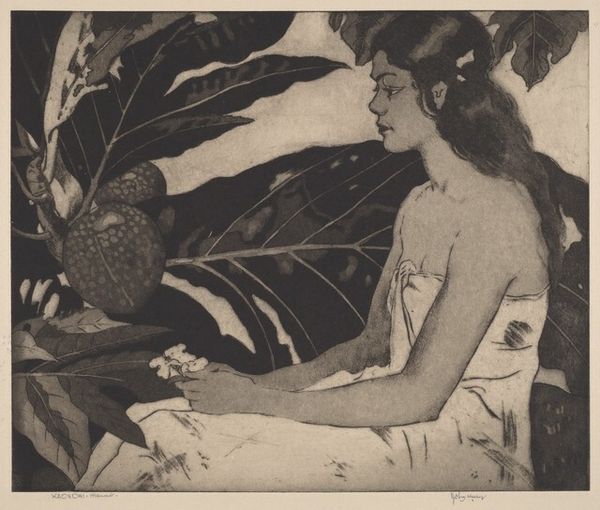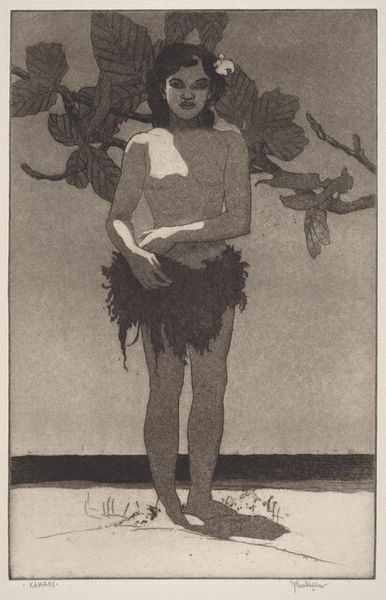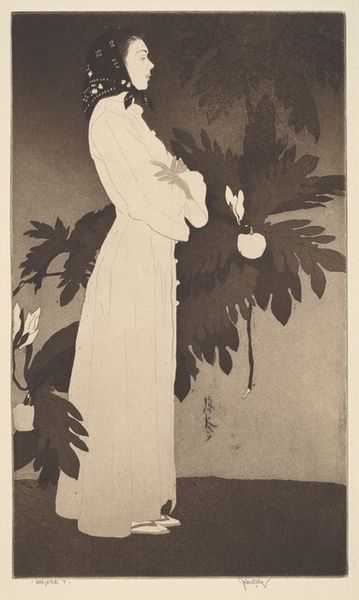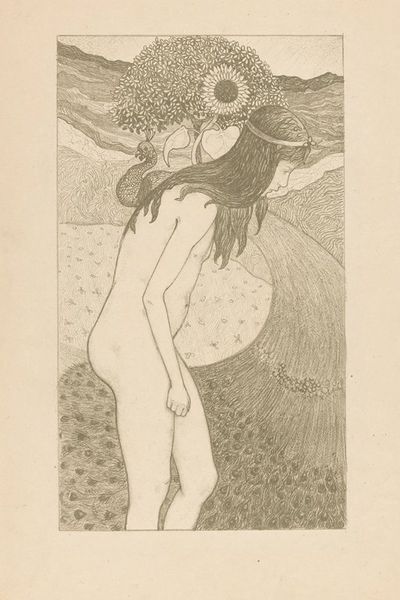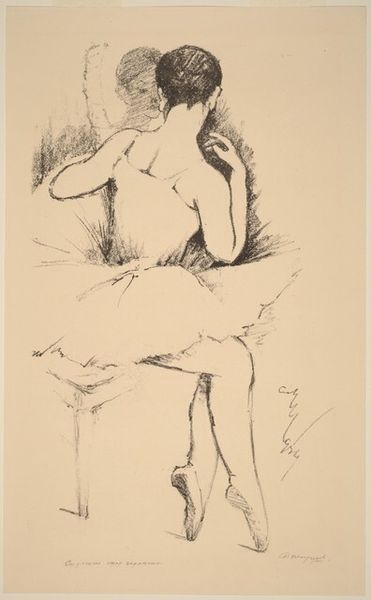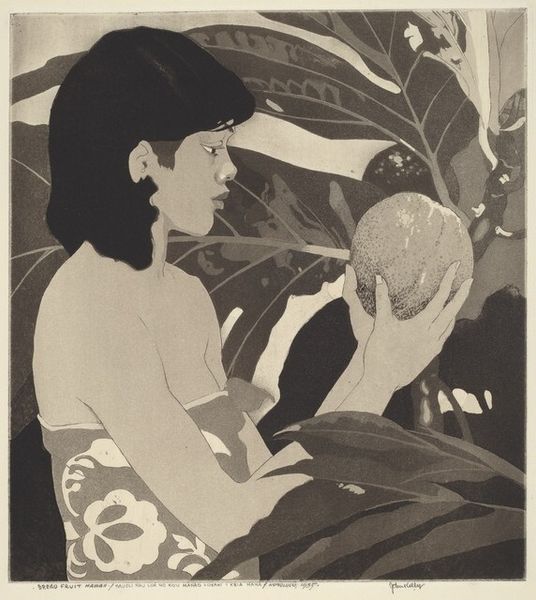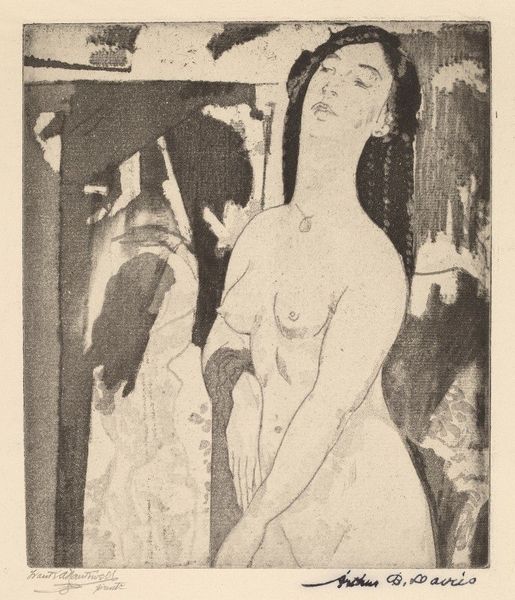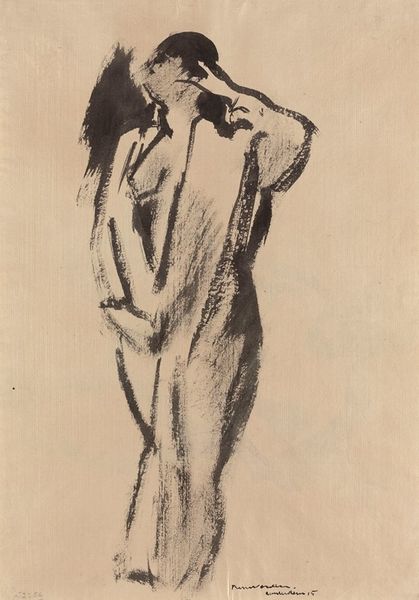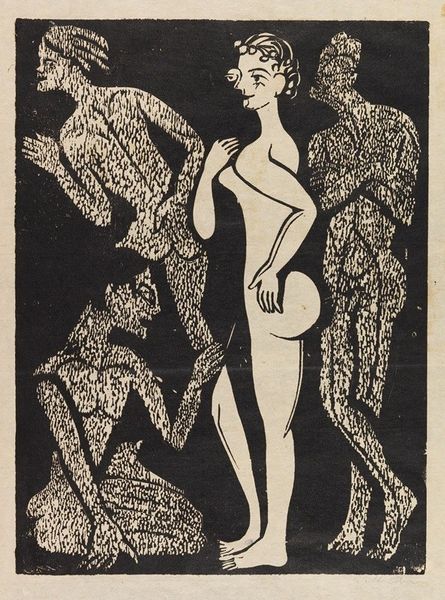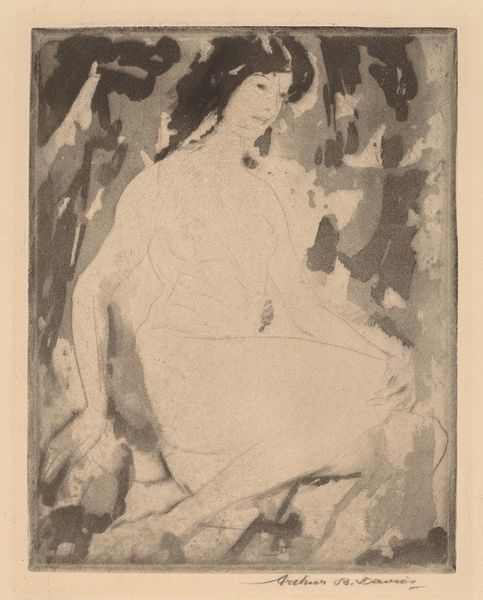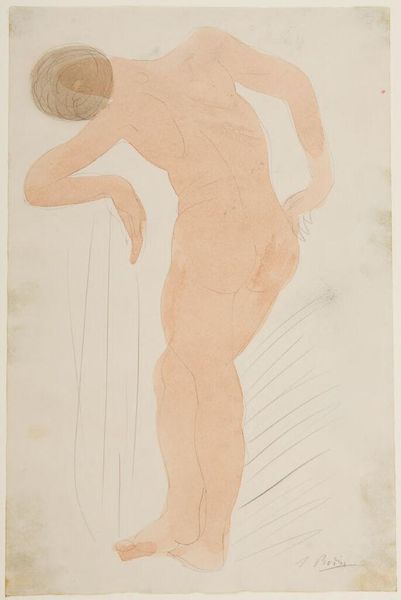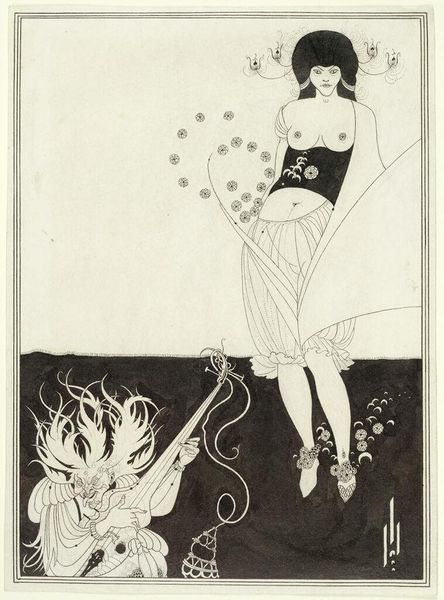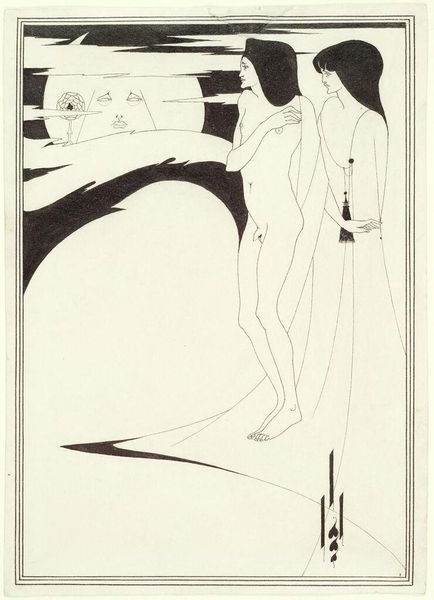
print, etching
# print
#
etching
#
landscape
#
figuration
#
pencil drawing
#
surrealism
#
nude
#
realism
Copyright: National Gallery of Art: CC0 1.0
Curator: The work before us is an etching by John Melville Kelly, titled "Study of Nude - Hawaii". Editor: My immediate reaction is how incredibly tactile this image feels, despite being a print. The cross-hatching gives real weight and volume to those gigantic leaves and to the figure herself. It feels very present, like I could reach out and touch it. Curator: It's interesting that you focus on touch because the production of an etching, a process involving acid and metal, is intrinsically linked to manipulation. The artist physically crafts the plate from which this image emerges, a process both industrial and intensely personal. This then dictates the possibilities and the visual language. Editor: Precisely! And within that context, how fascinating it is that Kelly chooses to depict the nude figure, which of course carries its own fraught history in art, but here amidst lush Hawaiian flora. It's as if he's subtly acknowledging art historical traditions while actively shifting their placement— from academic salons to an island landscape, thus forcing you to reflect upon art historical settings as power structures. Curator: Absolutely. The print, as a multiple, allows wider dissemination of this "study." Was Kelly engaging with debates about the accessibility and democratization of art at the time? Did it seek to create an accessible image in the cultural landscape of early 20th century Hawaii, potentially shifting perceptions about both landscape and the female form? Editor: Considering printmaking techniques such as etching, with their history rooted in both artistic and commercial spheres, complicates the reading of the artwork. How are we meant to read its distribution when nudes have been consumed differently in the hands of varying classes? Perhaps "Study of Nude - Hawaii" challenged or reinforced certain social hierarchies via mass reproduction. Curator: And think about what's excluded from view – is that landscape also carefully 'crafted', catering to particular desires of a projected viewer of that era? Editor: Looking at this etching from our current vantage point definitely ignites various thought-provoking historical, political, and socio-economical dimensions regarding the production, reception, and circulation of artworks like this.
Comments
No comments
Be the first to comment and join the conversation on the ultimate creative platform.
